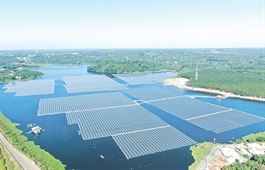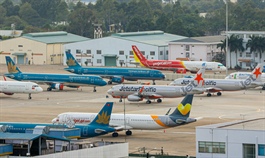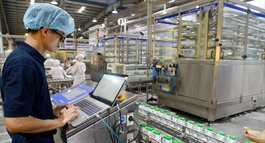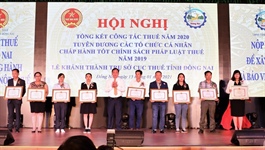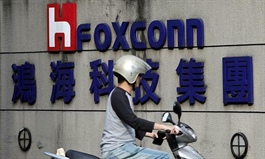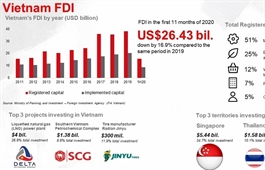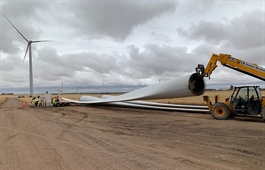Hanoi eyes int’l trade hub status in next 5 years
Hanoi eyes int’l trade hub status in next 5 years
In the past five years, there had been a positive shift in the city’s structure of industrial production, resulting in higher contribution of the sector to the overall gross regional domestic product (GRDP) growth.
For the 2021-25 period, Hanoi’s Department of Industry and Trade will focus on measures to promote trade and industrial sectors, in turn realizing the city’s vision of becoming an international trade hub.

Hanoi sets vision to become an international trade hub in the next five years. Photo: Le Viet.
|
The municipal Department plans to further attract investment capital and devise supporting programs for retailers to expand their distribution networks, including modern shopping malls or super markets.
Vice Director of the municipal Department of Industry and Trade Tran Thi Phuong Lan said amid the severe Covid-19 pandemic impacts, the city is pushing for greater domestic consumption and expanding trade infrastructure.
By 2025 and with vision to 2030, Hanoi plans to have another five regional wholesale centers, 10 regional shopping centers, 12 logistics centers, 68 shopping malls, 850 super markets and 140 traditional markets, including five wholesale markets that is expected to turn the city’s trade sector into a high-added value one.
In the past five years, there had been a positive shift in the city’s structure of industrial production, resulting in higher contribution of the sector to the overall gross regional domestic product (GRDP) growth from 1.02 percentage points to 7.16% economic growth, or 15.2% of the total, in 2016, to 1.42 percentage points to 7.63% overall growth, or 18.64%.
In 2020, the growth rate of added value in the industry sector rose by 4.91%, contributing 0.69 percentage points to the 3.98% GRDP growth, or 17.3% of the total.
Hanoi has seen strong growth of hi-tech industry sectors, mainly automation, nano, plasma, laser, and biotech, while staying atop nationwide in terms of revenue in the information and communications technology (ICT) with 6,000 IT firms and being home two out of the total five hi-tech parks in the country.
To further expand the development of hi-tech industries, Hanoi continues to invest in industrial infrastructure development. So far, the city is home to 113 industrial parks and 1,350 craft villages that create jobs for thousands of workers.
According to Mrs. Lan, in Hanoi’s next five-year economic plan, the city aims for the construction – industry sector to make up 22.5-23% of total GDP, and services sector 65.-65.5%.
“The room for the industry sector to grow remains large,” stated Mrs. Lan.
Mrs. Lan expected the added value of the industry sector in 2021-25 to expand at an average of 7.5-8% per year, export growth of 9.5-9/7%, and revenue from retail sales and services of 9-10%.
In addition to continue providing support for the business community, especially firms in priority industries or supporting industries, the municipal Department would further incorporate technological advancements from the Industry 4.0 to aid the development of the city’s sector.
“We continue to call for further investment in industrial infrastructure and lure hi-tech firms to industrial parks,” she added.




